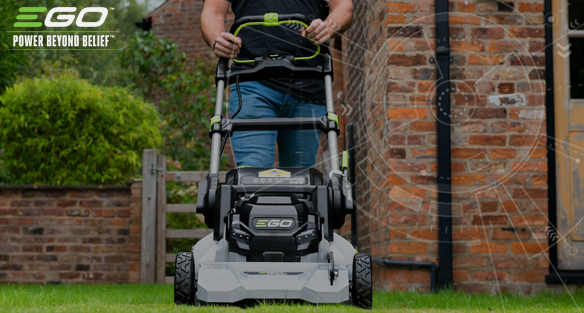Whether you like your lawn neat or you want to encourage bees and other wildlife, all lawns demand at least some regular ongoing maintenance.
Let’s look at the basics, including tips on lawn mowing, watering and feeding routines which follow more environmentally sound principles.
Your summer lawn activities
1. Watering
You’ll need to water closer-cut lawns more regularly than those left a bit longer (for example, that have been mowed at the lowest height of around 20mm).
If your lawn turns brown, because of drought, a water ban, or neglect, don’t worry - it will most likely recover by the autumn. Water it regularly if you don’t want this to happen - though sometimes it’s unavoidable.
You can take the pressure off your water bill and the environment by collecting and using grey water from your washing machine and bath.
Though this isn’t a solution for all-year-round watering, it can help intermittently. Discover more about this in our recent blog about grey water and your lawn.
2. Feeding
Lawns need a combination of nitrogen, phosphorus and potassium to stay healthy, but you probably only need to feed it well once a season.
- Nitrogen grows strong shoots and dense growth
- Phosphorus grows a strong root system
- Potassium helps the grass stay healthy, so it can stand up to threats like drought, disease, children’s ball games and pets
-
Shop bought lawn feeds also contain sulfur, calcium and magnesium, which are also beneficial. There are several ways you can feed your lawns. Some are more environmentally friendly than others.
- Adding a shop-bought feed, preferably organic and eco-friendly. These come in a sand base or granules. If you use granular feed during hot, dry periods, you’ll need to water it in
- Occasionally leaving a thin layer of cuttings that will decay and feed the lawn
- Allowing or encouraging microclover and wildflower growth
- Brew your own lawn feed - Gardening Know How has a great article about this, including recipes
3. Mowing
-
Grass loves the summer months and will grow like crazy, so you’ll probably need to mow it at least once a week while the sun is shining to keep it looking neat.
If there’s a water shortage (demanding a hosepipe and sprinkler ban), you might consider letting the grass grow a bit longer. This prevents moisture in the ground from evaporating and, if the sun beats down, your lawn from going brown.
Slightly longer lawns are great for cultivating wildflowers too, like microclover, dandelions and daisies, which are good for the health of your lawn as well as for insects.
You might also consider raising your cordless mower’s blades to the maximum cutting height to keep it slightly longer throughout the summer. See your manual for more details on how this works.
Cutting heights for EGO’s battery powered mowers range from 20mm to 95mm, depending on the model, so you have plenty of options.
Some homeowners go as far as to sow wildflowers and let their lawns grow high, cutting decorative pathways through and small play areas.
Better for the environment
As an innovative business, we’re committed to an environmentally-friendly future. This means empowering people to help make impactful changes - from giving up harmful petrol garden tools to taking a lighter-touch approach to garden maintenance.
If this topic interests you, see our Challenge 2025 manifesto and see how you can get involved.
